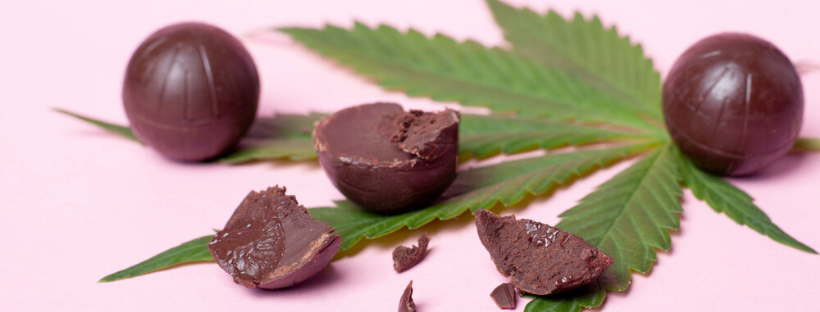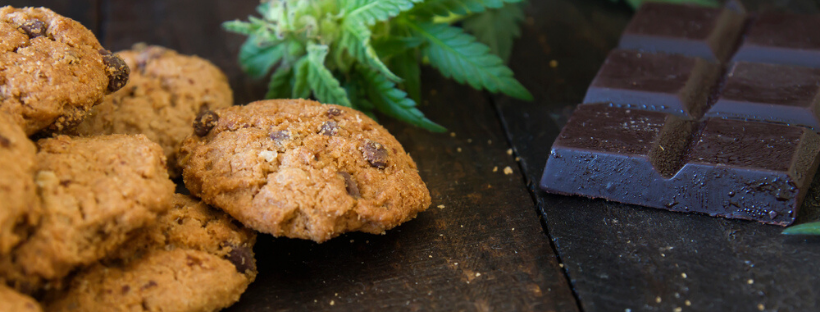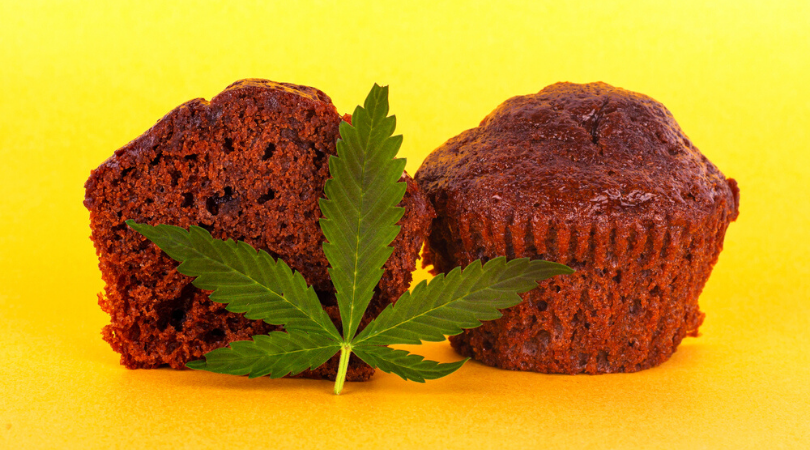Remember that story about two Toronto officers being recently suspended from duty after allegedly overdosing on marijuana edibles, becoming stoned to the ground, and then calling the cops on themselves?
The officers later complained about the psychedelic effects of their weed and were later taken to the emergency room.
Does it sound unreal?
Well, it does, but sometimes, edibles can really beat the hell out of you, especially if you eat too many at a time.
Like any psychoactive substances, the effects of THC and their duration depends on the route of administration, yet there’s a world of difference between the high you get from eating a weed-laced cookie and from smoking pot.
Compared to blazing a jay, edibles can give you a much stronger high that can be both body-centered and psychedelic if you take them for the first time — lasting up to six hours.
Of course, there’s a price to pay because you need to wait about 30–90 minutes for the effects to take hold. With smoked cannabis, the effects are almost instantaneous, peaking within 30 to 60 minutes to taper off after about 4 hours.
In this article, we explain why edible marijuana is stronger than smoking so that you can get a smooth experience with your first batch of baked weed goods.
1. The THC in Edibles is More Potent
When you deliver THC to your lungs via smoking or vaping, it enters the bloodstream through the lung tissues, traveling to the cannabinoid receptors in the brain. Once there, it produces a set of physiological and psychological effects commonly known as “high.”
Similar effects can be observed after eating a marijuana edible — but they are more potent than what you feel when smoking a joint.
That’s because a large fraction of THC makes it to the liver, where it converts to 11-hydroxy-THC. According to a 1973 study, where nine men were injected with 1 mg of 11-hydroxy-THC, reported intense psychologic high within 2-3 minutes after administration. All subjects described those effects as more intense than after smoking marijuana.
This form of THC is very effective at crossing the blood-brain barrier, hence the stronger effect on the mind.

In addition, some of the THC gets transferred from edibles to the salivary glands in the mouth, where they are sucked into the bloodstream before the remaining content gets metabolized by the liver.
2. THC is Fat Soluble
Another advantage of edibles over smoking when it comes to the potency of the high is the fact that THC is fat-soluble.
In other words, it dissolves in fats instead of water. This means that when taken along with fats, cannabis is absorbed more effectively than without them. Blood, on the other hand, is mostly water, so within seconds, it looks for the nearest endocannabinoid receptors in the body, never really having a chance to be processed in the digestive tract.
Once effectively absorbed, THC can actually go faster into your brain and faster all the way throughout the entire system.
3. Edibles Have a Delayed Onset
Eating your weed means that you’ll need to wait anywhere between 30–90 minutes for the high to kick in, although some people report first effects after as long as 120 minutes.
Therefore, when you take one edible and don’t feel anything after 30 minutes, you may be tempted to eat another piece to magically evoke the high.
This doesn’t work that way — sorry.
When you take another edible, you just ingest another dose of THC. Let’s say the first dose starts to work after 40 minutes — peaking after about another hour. When the second dose begins to take hold, the effects are overlapping, causing an extremely intense high and some uncomfortable side-effects, such as anxiety, confusion, overwhelming sedation, and paranoia.
The good news is that you can’t fatally overdose on marijuana, so if you don’t panic, drink plenty of water, and talk to a friend about the way you feel, these side-effects should wear off after 30–60 minutes.
Nevertheless, it’s wise to keep your THC in moderation, especially if you’re sensitive to its effects or have never taken edibles before.
4. Edibles Are More Difficult to Dose Than Smoking
Smoking a joint is as simple as a walk in the park. You just roll it, ignite, and inhale.
Now, the point with dosing smoked marijuana is to evaluate the effects after the first few puffs. For example, when you take two puffs, just wait for a minute or two and decide if you’re ready to take another hit.
If the answer is yes, follow through with two more puffs, and reevaluate your reaction. Do you feel high? Are you elevated but without the overwhelming stimulation?
That’s where you want to say “thank you, I’m done” — unless you want to end up completely done.
With edibles, that’s a different story.
Marijuana edibles not only require you to remain patient for the effects to come, but they are also difficult in terms of gauging the dosage based on the total THC content of your food.
It’s easier if you buy your edibles in a dispensary — they tell you how much THC is in a single serving — but when you bake your own batch of weed-laced brownies, you may have a hard time figuring out how much to eat.

Not only that, but the onset and intensity of your high depends on your weight, metabolism, physical activity levels, and whether or not you’re taking edibles on an empty stomach.
There Are Several Reasons Why Edible Marijuana is Stronger Than Smoking
Aside from individual factors, such as a person’s weight, age, diet, tolerance to THC, and how often they consume the herb, edible marijuana is stronger than smoking because:
- Edible marijuana has a different route of administration
- Edibles need more time to produce their effects — it’s easy to eat too much THC at a time when you don’t wait long enough for the first dose to take hold.
- The THC is first absorbed in the mouth, then it gets metabolized by the liver.
- Once in the liver, THC transforms into 11-hydroxy-THC. This form is super effective at crossing the blood-brain barrier and produces more psychedelic effects that are also strongly focused on the body.
- THC is fat soluble — most edibles are made using some sort of cannabis cooking fat, making them easily absorbable in the gut.
What’s your experience with marijuana edibles? Do you like the fact that edible marijuana is stronger than smoking? Let us know in the comments!


